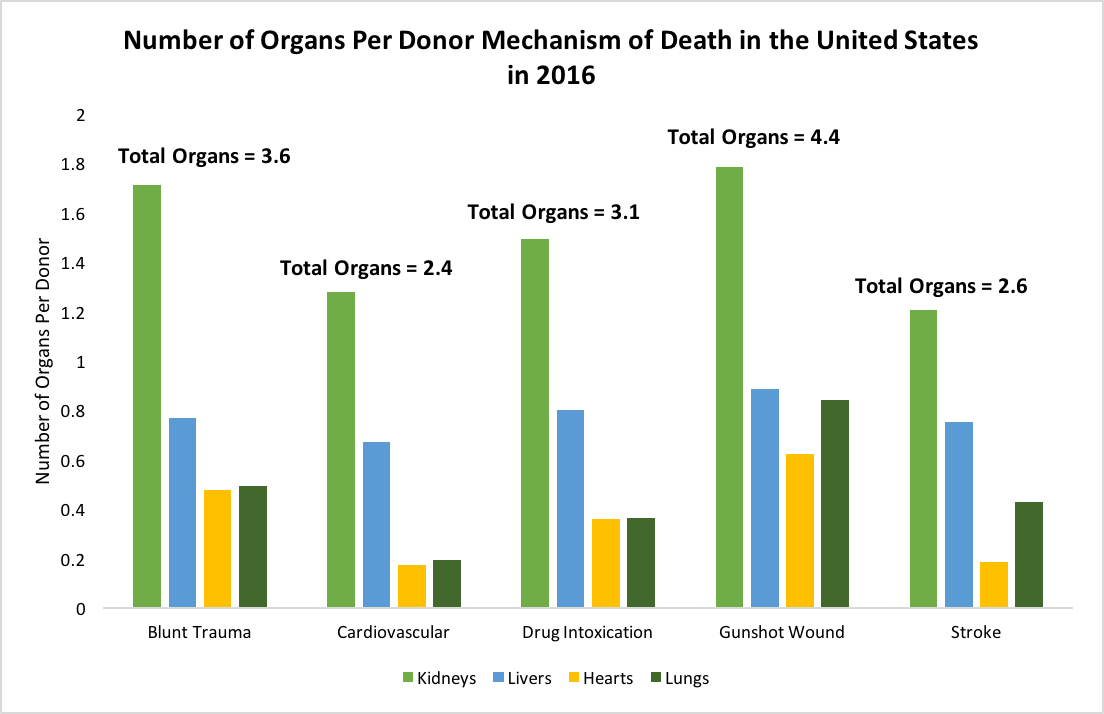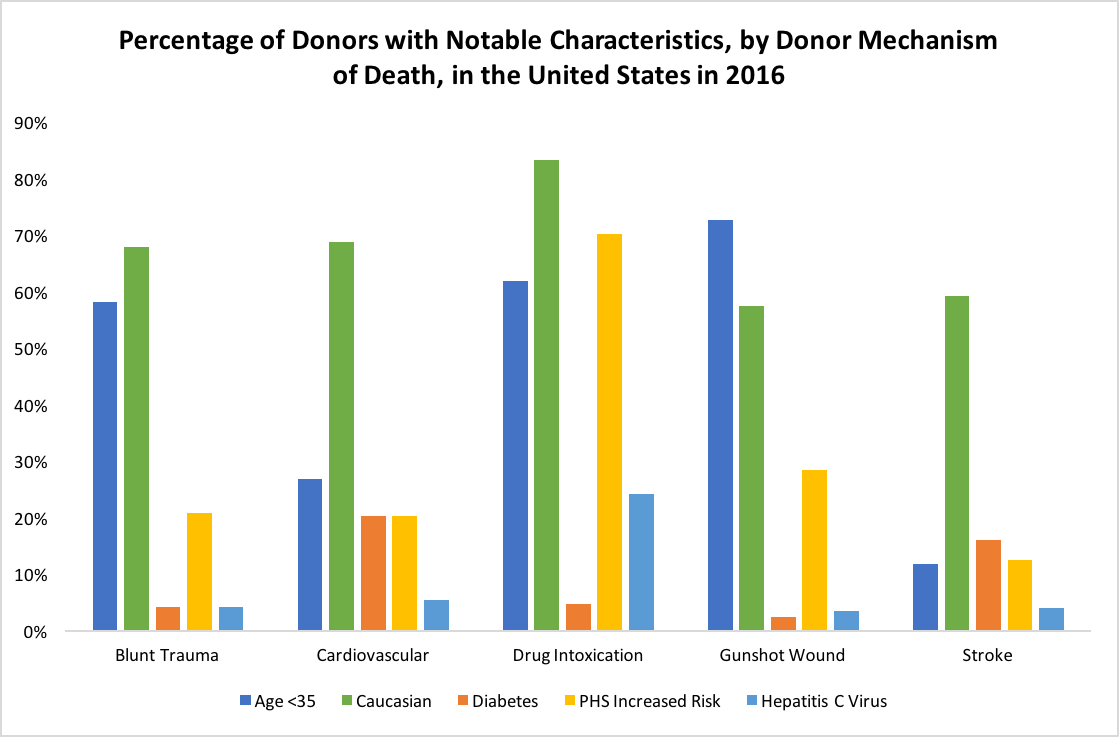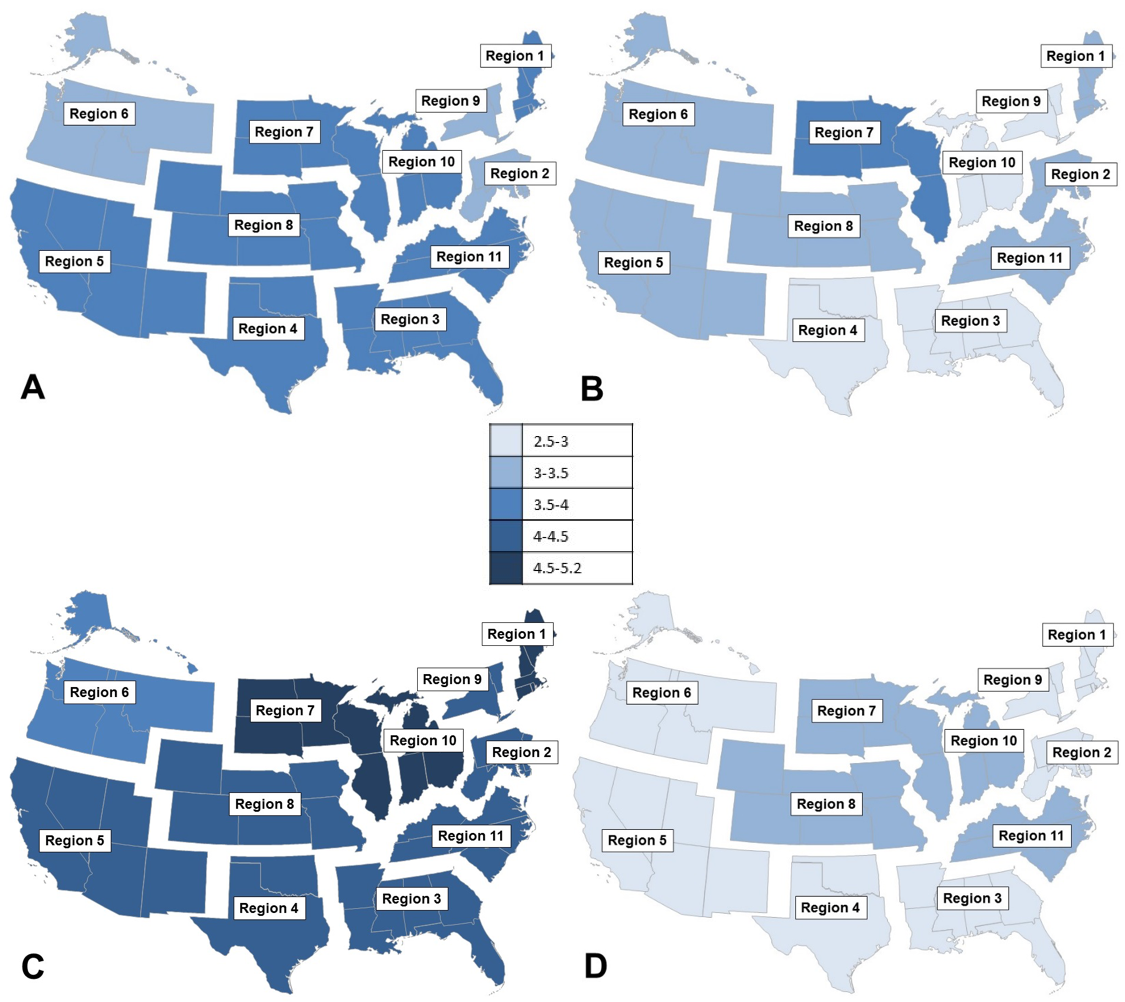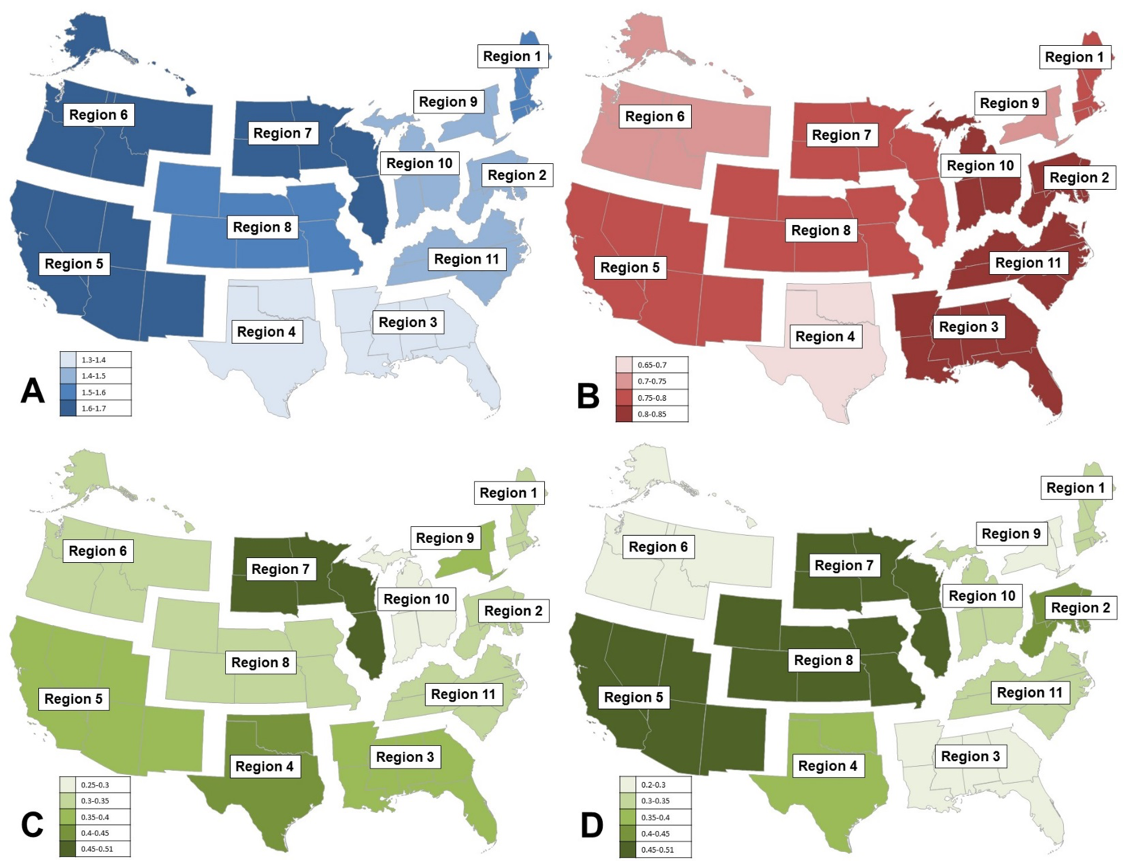Organ Utilization Following Drug Overdose Death is Variable by Region in the United States
Laura Hickman1, John T Killian1, Samuel T Windham1,2.
1Department of Surgery, University of Alabama at Birmingham, Birmingham, AL, United States; 2Alabama Organ Center, Birmingham, AL, United States
Introduction: The American opioid epidemic is an increasingly critical public health concern resulting in thousands of preventable deaths per year. However, this tragedy has resulted in the opportunity to save countless lives through organ donation. This study seeks to understand the regional variation in organ utilization from drug overdose (DO) deaths in 2016 in the United States.
Materials & Methods: We analyzed data from the Organ Procurement and Transplantation Network (OPTN) as of November 10, 2017 that included deceased donors with DO as reported mechanism of death who donated at least one transplanted organ in 2016. Only donors that had data from mechanism of death were reported.
Results & Discussion: There is variation in the number of organs transplanted per donor among the five most common mechanisms of death: blunt trauma, cardiovascular, drug intoxication, gunshot wounds, and stroke. Cardiovascular deaths result in the least number of donations (2.4 organs/donor) while gunshot wounds result in the most (4.4 organs/donor). Deaths from cardiovascular and neurologic causes contribute fewer thoracic organs than other mechanisms of death (Figure 1). DO donors are similar to both blunt trauma and gunshot wound donors in demographics, but have higher rates of Public Health Service (PHS) increased risk designation and hepatitis C virus positivity (Figure 2). The number of organs per donor varies by regions as well as mechanism. There is regional variation in organs/donor for blunt trauma, drug overdose, gunshot wound donors (Figures 3A-C). Lower utilization of DO donors is likely secondary to the nationwide trend of decreased utilization of Public Health Service (PHS) increased risk donors (Figure 3D). When evaluating DO donors only, different regions of the US tend to utilize different organs: kidney utilization is highest in the West, liver utilization rates is highest in the South, and thoracic organ utilization is highest in the West and Midwest (Figure 4). Notably, Region 7 (Illinois, Wisconsin, Minnesota, North Dakota, and South Dakota) has high utilization rates across all organs for DO donors.
Conclusion: The opioid epidemic is a critical issue in the United States, and understanding how the transplant community is using the live-saving gift of organ donation in this time of great loss is of utmost importance. Analysis of OPTN 2016 data shows drug overdose donors contribute fewer organs per donor than mechanisms of death with similar demographics. This is likely due to PHS increased risk designation, though studies have shown the absolute risk to be low. Furthermore, utilization of DO organs varies by geographic region, with highest utilization of all organs in the Midwest.




